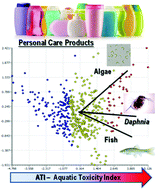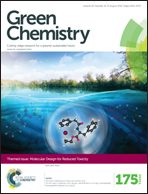Aquatic ecotoxicity of personal care products: QSAR models and ranking for prioritization and safer alternatives’ design†
Abstract
Personal Care Product (PCP) ingredients, widely used all over the world, over the last few years have become chemicals of increasing environmental concern, mainly because they are detected in water and may harm wildlife. Due to their high structural heterogeneity, the big number of end-points and the huge lack of experimental data, it is very important to have tools able to quickly highlight the most hazardous and toxic compounds, focusing the experiments on the prioritized chemicals. In silico tools, like QSAR models based on structural molecular descriptors, can predict the missing data for activities and properties necessary to prioritize the existing or even not yet synthesized chemicals for their potential hazard. In the present study, new externally validated QSAR models, specific to predict acute PCPs’ toxicity in three key organisms of aquatic trophic levels, i.e. algae, crustacean and fish, were developed according to the OECD principles for the validation of QSARs, using the QSARINS software. These OLS models based on theoretical molecular descriptors calculated by PaDEL-Descriptor software, selected by genetic algorithm, are statistically robust, externally predictive and characterized by a wide structural applicability domain. They were applied to predict acute toxicity for over 500 PCPs without experimental data; a trend of acute aquatic toxicity was highlighted by PCA allowing the ranking of inherently more toxic compounds, using also a MCDM approach for prioritization purposes. Additionally, a QSAR model for the prediction of this aquatic toxicity index (ATI) was proposed to be applicable in QSARINS for the a priori chemical design of non environmentally hazardous PCPs.

- This article is part of the themed collection: Molecular Design for Reduced Toxicity

 Please wait while we load your content...
Please wait while we load your content...